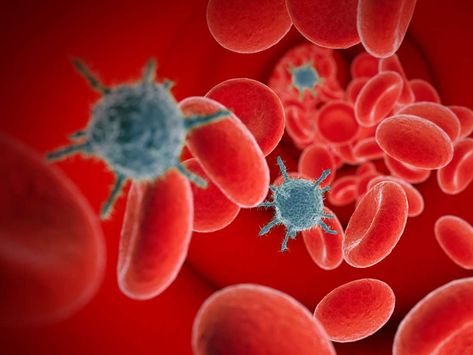TECHNOLOGY PAGE

MagBiosense is developing a Point of Care device and a proprietary consumable cartridge for highly sensitive detection of biomarkers. Through the use of a novel Magnetic Modulation Biosensing (MMB) technique, we have already showed rapid and highly sensitive detection of proteins and specific DNA sequences. Most commonly used detection assays are based on fluorescence labeling of the biological targets. When marking low concentrations of a target analyte with a fluorescent probe, the subsequent fluorescent signal is very weak and masked by background noise from the solution.
MMB uniquely combines magnetic and fluorescent labeling of the target analyte, and applies an external magnetic field to increase sensitivity of fluorescence detection. The external, alternating magnetic field condenses the targets to a small volume and sets them into a periodic motion, removing the background signal from the oscillating target signal without complex sample preparation. This enables state of the art, high sensitivity with the ease of use of a point-of-care device.
MMB-based Zika IgM/IgG assays
Zika virus has created global alarm as it has been associated with catastrophic fetal abnormalities, including microcephaly, spontaneous abortion, and intrauterine growth restriction. Current serological assays that detect antiviral antibodies suffer from low sensitivity and high cross-reactivity among different flaviviruses. Utilizing our novel Magnetic Modulation Biosensing (MMB) system and the Zika non-structural 1 (NS1) protein, we showed highly sensitive and specific Zika serological assays. We blindly tested 60 reverse transcription-PCR Zika-positive samples and healthy patients’ serum samples, as well as 44 serum samples from ELISA West Nile- and dengue-positive patients. The Zika-positive samples were collected from Israeli travelers returning from Zika endemic areas. The MMB Zika assays have 88–97% sensitivity, much higher than the current state-of-the-art Euroimmun ELISA assays (38–74%). Additionally, the specificity is 100%, and the cross reactivity with West Nile and dengue viruses is minimal (0–4%). Furthermore, the MMB assays detected Zika IgM antibodies as early as 5 days and as late as 180 days post symptoms onset, significantly extending the number of days that the antibodies are detectable. In addition, the MMB-based Zika assays has much lower rate (90% fewer cases) of false positive results than the Euroimmun ELISA. Overall, the sensitivity, specificity, and simplicity of the MMB assays may significantly improve Zika diagnosis and provide accurate results for public health agencies.
MMB research platform
In addition to the clinical market, the MMB platform is ideal for the research market. Its low cost, rapid detection, and high sensitivity allow researchers to:
REFERENCES
1
Y. Michelson, Y. Lustig, S. Avivi, E. Schwartz, and A. Danielli, “Highly sensitive and specific Zika virus serological assays using a magnetic modulation biosensing system”, Journal of Infectious Diseases, jiy606 (2018) click here
2
Verbarg, O. Hadass, P. D. Olivo, and A.Danielli, “High sensitivity detection of a protein biomarker Interleukin-8 utilizing a magnetic modulation biosensing system,” Sensors and Actuators B: Chemical, 241, 614-618 (2017) click here
3
A. Danielli, N. Porat, M. Ehrlich, and A. Arie, ”Rapid homogeneous detection of biological assays using magnetic modulation biosensing system,” Journal of Visualized Experiments, 40. click here, doi: 10.3791/1935, (2010)
4
A. Danielli, N. Porat, M. Ehrlich, and A. Arie, “Magnetic modulation biosensing for rapid and homogeneous detection of biological targets at low concentrations,” Current Pharmaceutical Biotechnology, 11, 128-137 (2010)
5
A. Danielli, N. Porat, A. Arie, and M. Ehrlich, “Rapid homogeneous detection of the Ibaraki virus NS3 cDNA at pico-molar concentrations by magnetic modulation,” Biosensors and Bioelectronics, 25, 858-863 (2009)
6
A. Danielli, A. Arie, N. Porat and M. Ehrlich, “Detection of fluorescent-labeled probes at sub-picomolar concentrations by magnetic modulation,” Optics Express, 16, 19253-19259 (2008)

MagBiosense developed a proprietary treatment that significantly improves fluorescence-based assays’ sensitivity and Signal-to-Noise ratio. In fluorescence-based assays, usually a target molecule is captured using a probe conjugated to a capture surface and then detected using a second fluorescently labeled probe. One of the most common capture surfaces is a magnetic bead. However, magnetic beads exhibit strong autofluorescence, which often overlaps with the emission of the reporter fluorescent dyes and limits the analytical performance of the assay. Using MagBiosense proprietary treatment technology, we reduced the autofluorescence of magnetic beads down to 1% of the initial value. The treatment can take between 15 minutes to 24 hours (depends on the quantity).
We analyzed their autofluorescence properties and the stability of the photobleaching over a period of two months. The photobleached beads were stable over time and their surface functionality was retained. In a high sensitivity LX-200™ system using photobleached magnetic beads, human interleukin-8 was detected with a 3-fold improvement in detection limit and signal to noise ratio over results achievable with non-bleached beads.References:
S. Roth, O. Hadass, M. Cohen, J. Verbarg, J. Wilsey, and A. Danielli, “Improving the sensitivity of fluorescence-based immunoassays by photobleaching the auto-fluorescence of magnetic beads,” Small, 15(3), 1803751 (2018) click here
